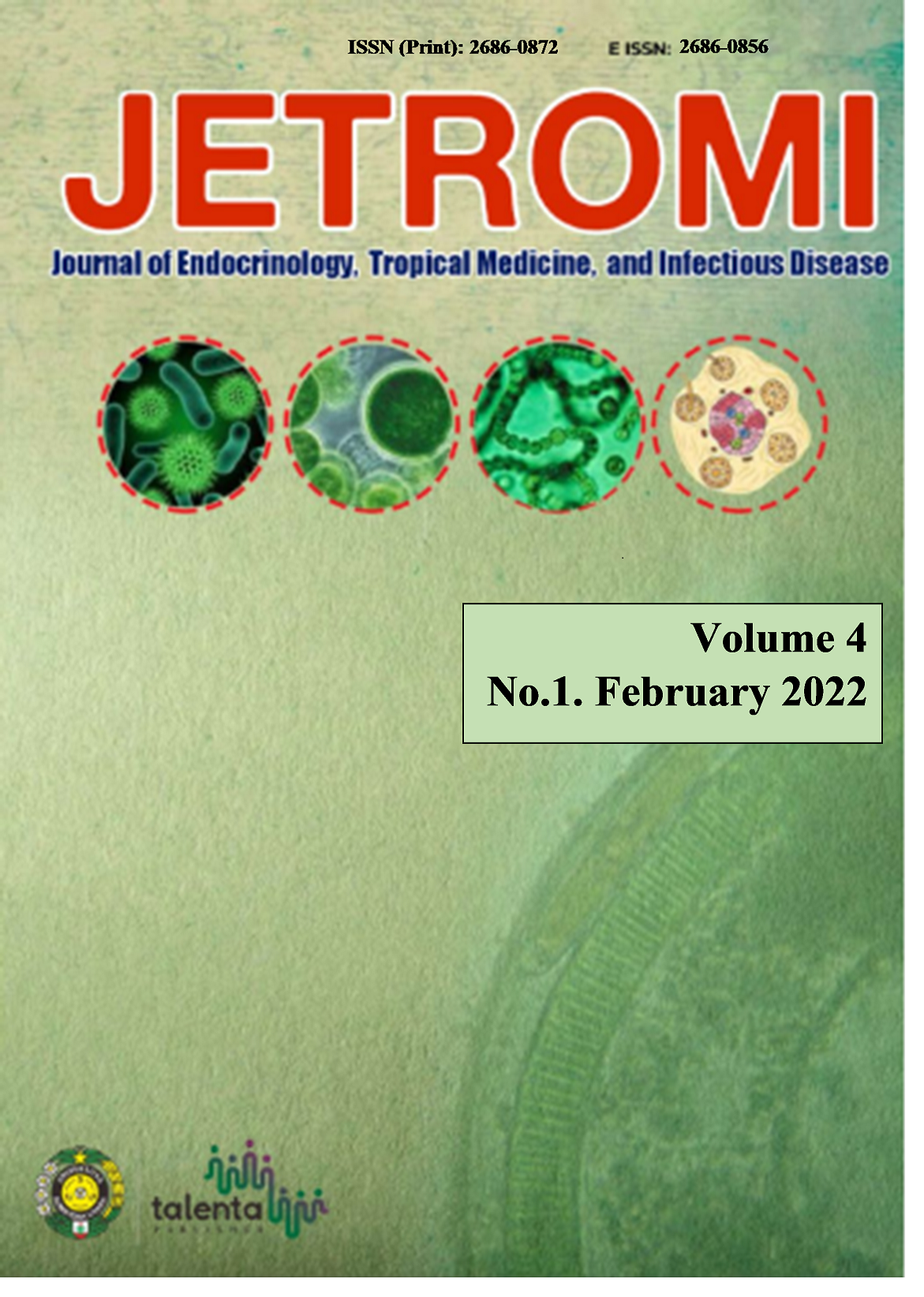Correlation Between the Ratio TG/HDL-C and Lipid Profile in Nonalcoholic Fatty Liver Disease Patients
DOI:
https://doi.org/10.32734/jetromi.v4i1.8595Keywords:
Ratio of TG/HDL-C, NAFLD, Lipid ProfileAbstract
Background:Â Insulin resistance is identified as an impaired biological response to insulin stimulation of target tissues primarily in the liver, muscle, and adipose tissue. The ratio TG/HDL-C has been proposed as a simple marker of insulin resistance. The study aimed to determine the correlation between the ratio TG/HDL-C and lipid profile in nonalcoholic fatty liver disease (NAFLD) patients
Method: The design of the study was a cross-sectional study with the dependent variable Fibrosis Score of NAFLD sufferers who came to H. Adam Malik Medan General Hospital network hospital from July-September 2021. Diagnosis of NAFLD from anamnesis, physical examination, laboratory, and abdominal ultrasound. Lipid profile examination is carried out using a spectrophotometer tool colorimetric enzymatic method, observed include TC, HDL-C, LDL-C, and TG.
Results: There are 80 NAFLD patients, aged 54.8±8.7 years, with uncontrol T2DM, and normal weight. There was a correlation significantly between the ratio TG/HDL-C with TC-C, TG, HDL-C, LDL-C (p<0.001), and no correlation between ratio TG/HDL-C with age, BMI, FPG, PPG, and HbA1c (p>0.05)
Conclusion:Â There is a correlation between ratio TG/HDL-C (as a marker of insulin resistance) and lipid profile in NAFLD patients
Downloads
Downloads
Published
Issue
Section
License
Copyright (c) 2022 Journal of Endocrinology, Tropical Medicine, and Infectious Disease (JETROMI)

This work is licensed under a Creative Commons Attribution-NonCommercial-ShareAlike 4.0 International License.
The Authors submitting a manuscript do so on the understanding that if accepted for publication, copyright of the article shall be assigned to Journal of Endocrinology, Tropical Medicine and Infectious Diseases (JETROMI).
Copyright encompasses exclusive rights to reproduce and deliver the article in all form and media. The reproduction of any part of this journal, its storage in databases and its transmission by any form or media, will be allowed only with a written permission from Journal of Endocrinology, Tropical Medicine and Infectious Diseases (JETROMI).








